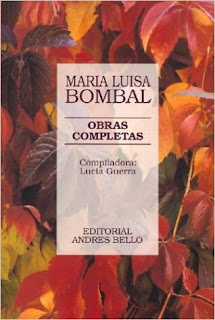Before I forget, just wanted to remind y'all that Spanish Lit Month(s) 2016 will continue throughout August for any/all inclined to keep reading Spanish language literature in fine company for another month. For those of you who have already had enough, good riddance--I mean, thanks for participating and keep checking back every Sunday or so for the latest links round-ups. Cheers!
Amateur Reader (Tom), Wuthering Expectations
the stupidity of people agreeing to get bored together for a day - general impressions of La Regenta
(on La Regenta by Leopoldo Alas)
Emma, Book Around the Corner
Tango for a Torturer by Daniel Chavarría
Grant, 1streading's Blog
The Buenos Aires Affair by Manuel Puig
JacquiWine, JacquiWine's Journal
Affections by Rodrigo Hasbún
Joe, roughghosts
Poets, artists and other lost souls: Last Evenings on Earth by Roberto Bolaño
John, The Modern Novel
Campo abierto [Open Field] by Max Aub
Los afectos (Affections) by Rodrigo Hasbún
lizzysiddal, Lizzy's Literary Life
#spanishlitmonth - Reading Notes
Obooki, Obooki's Obloquy
Time of Silence by Martín Luis-Santos
JacquiWine, JacquiWine's Journal
Affections by Rodrigo Hasbún
Joe, roughghosts
Poets, artists and other lost souls: Last Evenings on Earth by Roberto Bolaño
John, The Modern Novel
Campo abierto [Open Field] by Max Aub
Los afectos (Affections) by Rodrigo Hasbún
lizzysiddal, Lizzy's Literary Life
#spanishlitmonth - Reading Notes
Obooki, Obooki's Obloquy
Time of Silence by Martín Luis-Santos
Rise, in lieu of a field guide
(on "Shakespeare's Memory" by Jorge Luis Borges)
(on The Pact of Biyak-na-Bato and Ninay by Pedro Paterno)
Scott G.F. Bailey, six words for a hat
Divine Madness: la idiota en casa y iglesia, by Leopoldo Alas
(on La Regenta by Leopoldo Alas)
Simon Lavery, Tredynas Days
A cold and calculating egotism: La Regenta, by Leopoldo Alas
Seduce her for me: Ana's fate sealed in La Regenta
Scott G.F. Bailey, six words for a hat
Divine Madness: la idiota en casa y iglesia, by Leopoldo Alas
(on La Regenta by Leopoldo Alas)
Simon Lavery, Tredynas Days
A cold and calculating egotism: La Regenta, by Leopoldo Alas
Seduce her for me: Ana's fate sealed in La Regenta
Tony, Tony's Reading List
The Transmigration of Bodies by Yuri Herrera
Tony Messenger, Messengers Booker (and more)
The Youngest Doll by Rosario Ferré
Multiple Choice by Alejandro Zambra
















